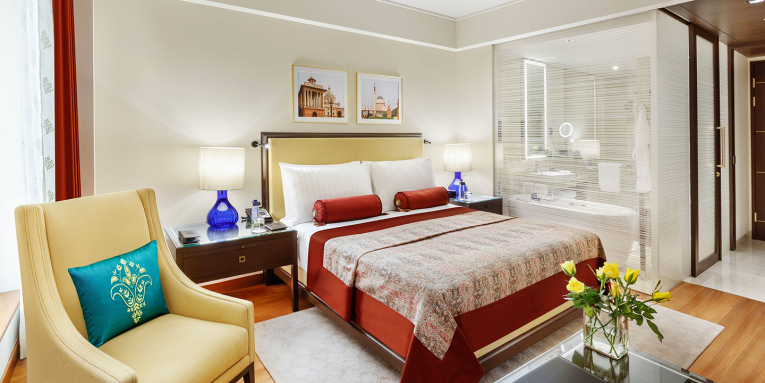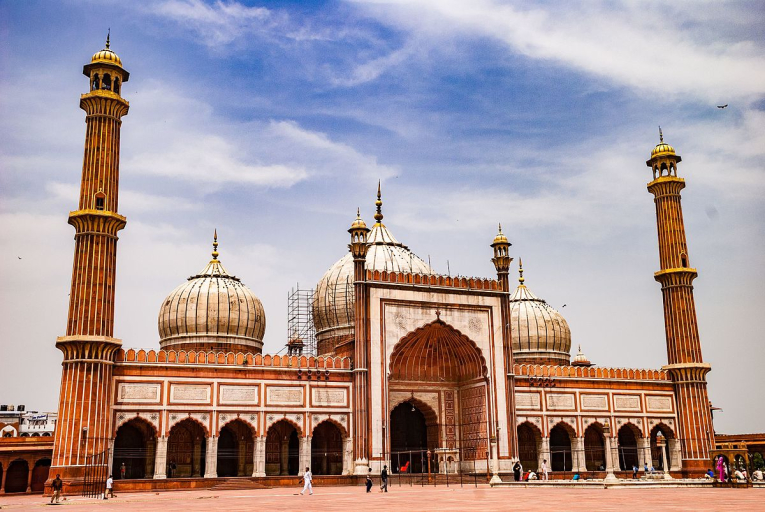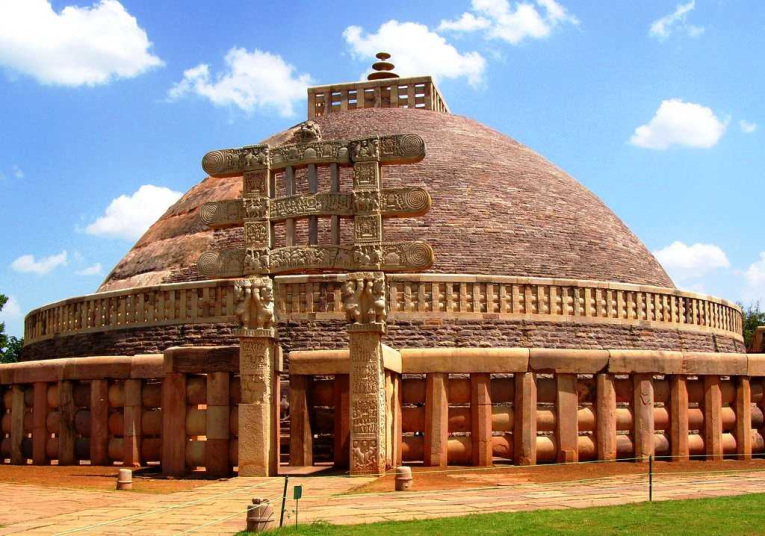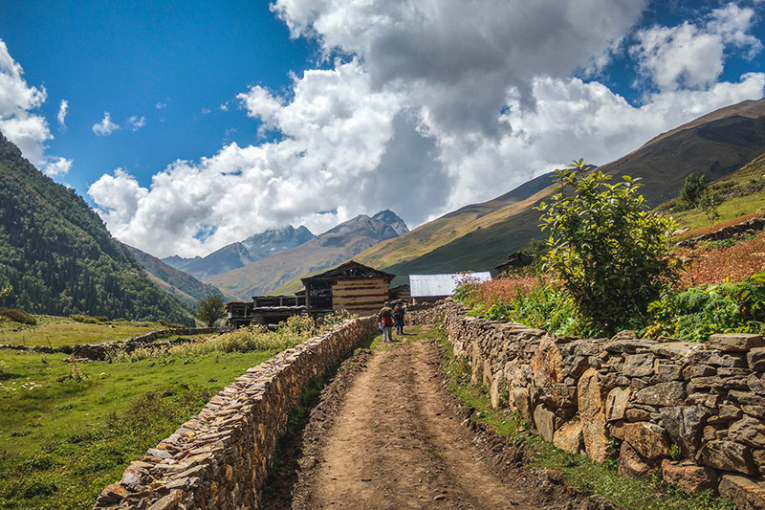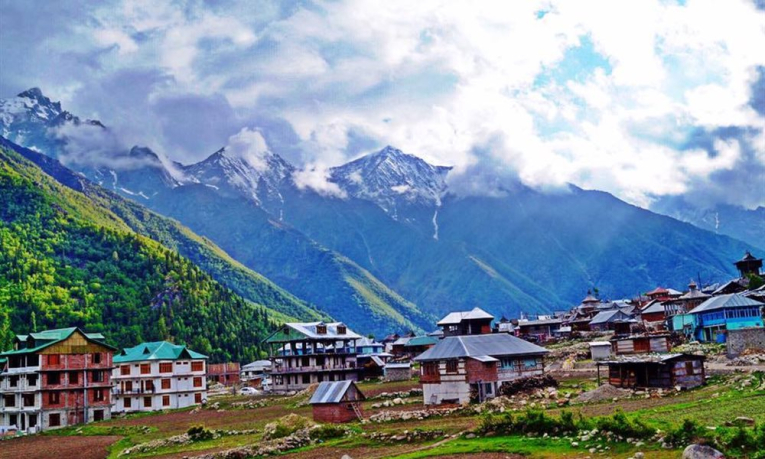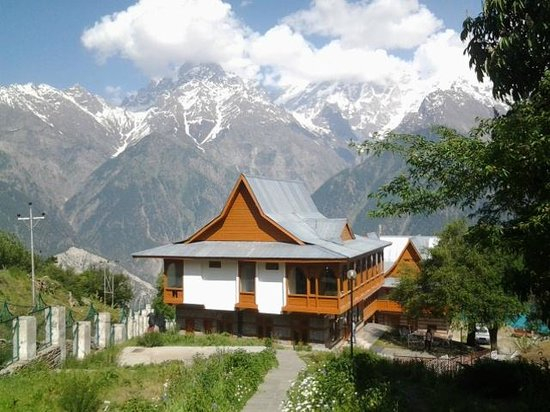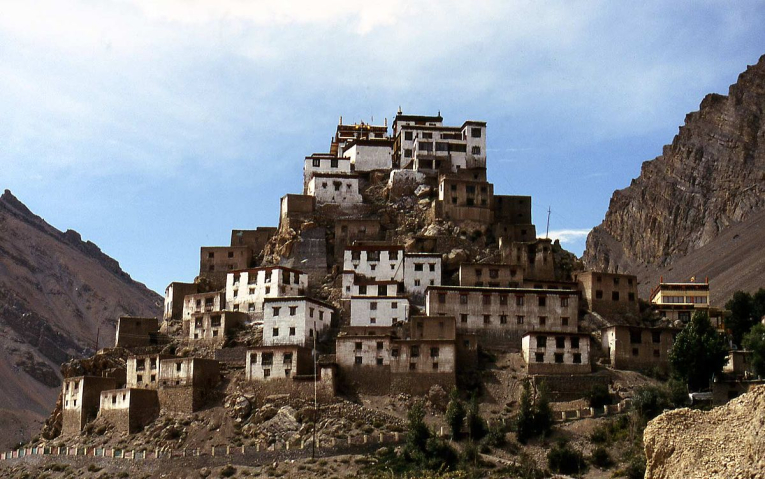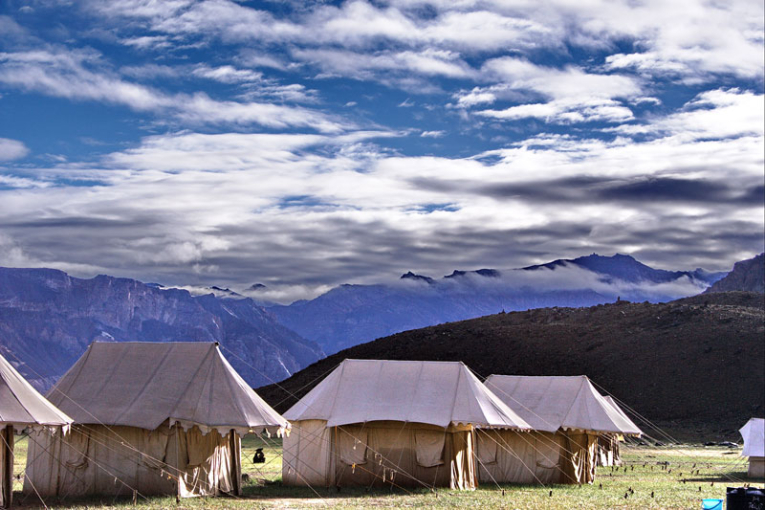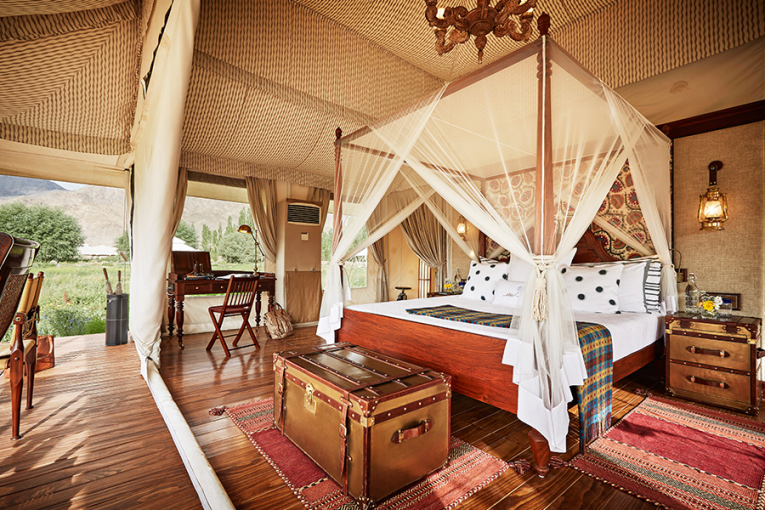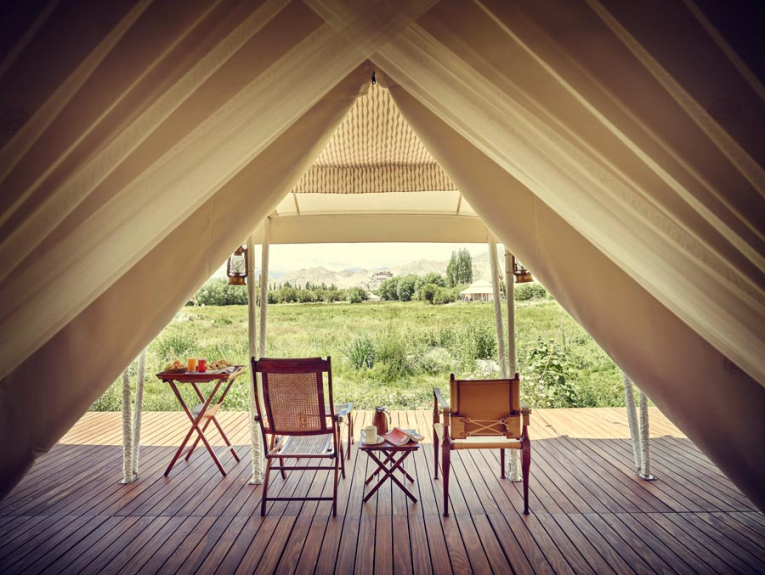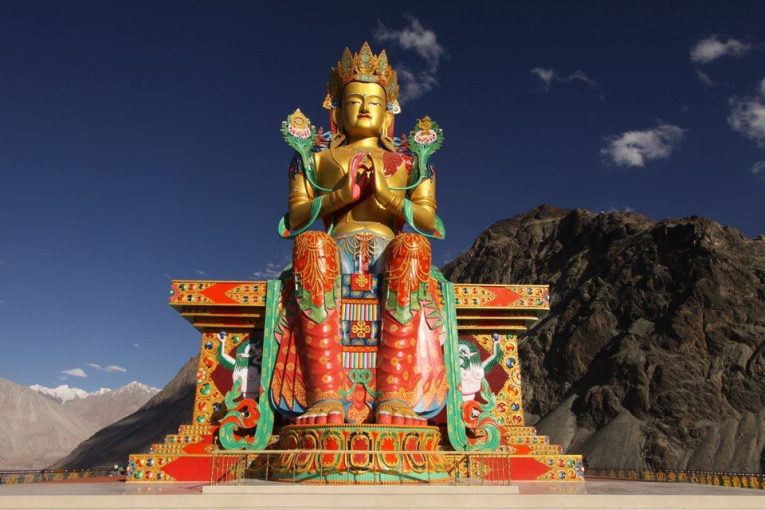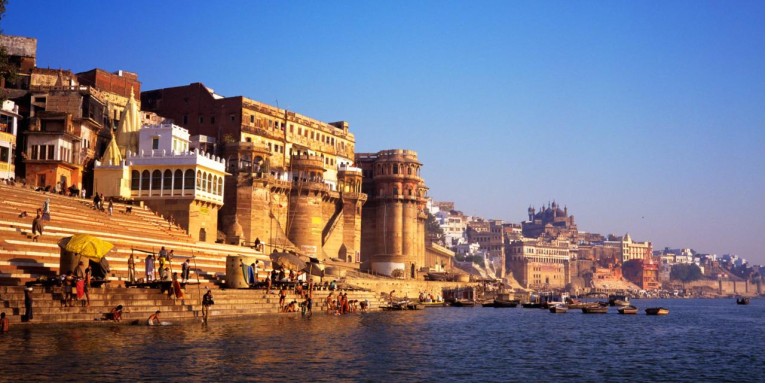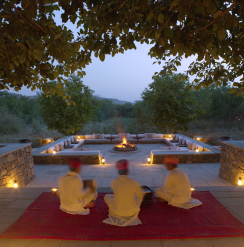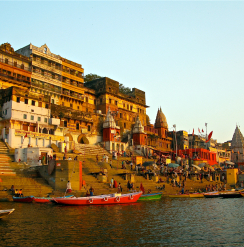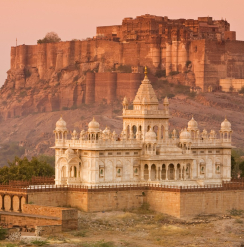Situated at an altitude of around 12,500 feet over sea level it is bordered by Tibet in the east, Ladakh to the north, Kinnaur to the south-east and Lahaul and Kullu to the south, Spiti along with the twin valley of Lahaul carries a pristine charm. “A world within a world” was how Rudyard Kipling once described Spiti Valley. Also called as “The Middle Land” between India and Tibet, Spiti Valley, transforms itself from wide fields of snow to wide fields of barley, from lush green valley to cold desert with different shades of brown, often with the most breathtaking scenery. The legend says that long ago in the 8th century, Padmasambhava, the Indian Monk, established and blessed some of the monasteries in Spiti and ever since they have remained unchanged. Lose yourself in the most astonishing valley of the Himalayas, exploring the beautiful moon landscapes, deep blue lakes, golden snow peaks and the most remote villages of India.
The journey to the valleys of Lahaul and Spiti and then to Ladakh will be the most adventurous story you will have of your life.
-
Day 01: Arrive in Delhi
Arrive at New Delhi’s Indira Gandhi International Airport Terminal (T3). Upon arrival, you will be met by a representative or concierge who will then escort you to your vehicle and accompany you in the chauffeur driven vehicle to your hotel.
At Hotel, our concierge will assist you with the necessary check-in formalities.
Delhi remains one of the oldest surviving cities in the world today. It is in fact, an amalgam of eight cities, each site being built in a different era by a new dynasty/ ruler. Today the remains of forts, palaces and buildings are spread across the city, hence adding to its character. Delhi through its 1000-year-old history has evolved into a culturally secular city – absorbing different religions, diverse cultures, both foreign and indigenous, and yet functioning as one organic entity. It was known for its riches – both material and cultural – books have been written on it since time immemorial, poets have loved it, and Kings and Emperors have fought over it.
Stay two nights at The Oberoi. Accommodation is in Heritage Room inclusive of breakfast.
Overnight: The Oberoi
-
Day 02: In Delhi
This day after breakfast at the hotel, begin the sightseeing with a visit to Old Delhi covering The Jama Masjid. Located in the centre of the old city, this congregational mosque was built by Sultan Ahmed Shah in 1423. Later drive past the Red Fort on the western bank of the river Yamuna. Built in red stone, The Mughal Emperor Shah Jahan started the construction of this massive fort in 1638, after which he shifted the capital from Agra to Delhi. Visit Raj Ghat, a memorial to Mahatma Gandhi is a simple black marble platform that marks the spot of his cremation on 31 January 1948. It is left open to the sky while an eternal flame burns perpetually at one end. A stone footpath flanked by lawns leads to the walled enclosure that houses the memorial. Two museums dedicated to Gandhi Ji are located nearby. The memorial has the epitaph He Ram, believed to be the last words uttered by Gandhi.
Later, we begin our sightseeing in New Delhi. We start with a visit to Humayun’s Tomb, the tomb of the second emperor of the Mughal dynasty. Built in the 16th century, it was the first Mughal garden tomb and an excellent example of early Mughal architecture. This style reached its maturity with the Taj Mahal at Agra. We continue our exploration of the city as we drive past the multitude of stately colonial buildings – constructed when Delhi was to be the capital of the British Indian Empire. Planned by architect Edwin Lutyens, construction on the city started in 1911, and inaugurated on February 13, 1931, by British India's Governor-General Lord Irwin.
Later drive around and see the historical, tree-lined area of the plush Lutyens Delhi. After Delhi was made the capital of India in 1911, (the former capital being Calcutta) it was designed by a British architect, Edwin Lutyens, hence the name “Lutyen’s Delhi”. Explore the government buildings, the President’s house & the India Gate.
Return to your hotel for overnight stay.
Overnight: The Oberoi
-
Day 03: Delhi - Chandigarh - Shimla
Morning in time transfer to airport to board the Jet Airways flight 9W-651 departing at 0920 for Chandigarh. Arrive in Chandigarh at 1045 hours.
Met upon arrival and board your vehicle to drive to the Dharampur Railway Station, 50 Kms/ Approx 2 hours drive. Here we board the Shimla Railway a UNESCO World Heritage Site. The Kalka–Shimla Railway is a 2 ft 6 in (762 mm) narrow-gauge railway in North India which traverses a mostly-mountainous route from Kalka to Shimla. It is known for dramatic views of the hills and surrounding villages. The railway was built in 1898 to connect Shimla, the summer capital of India during the British Raj, with the rest of the Indian rail system. During its construction, 107 tunnels and 864 bridges were built along the route.
The Dharampur Station lies on UNESCO World Heritage Site Kalka–Shimla Railway. Dharmpur railway station is located at an altitude of 1,482 metres (4,862 ft) above mean sea level. The 610 mm narrow gauge Kalka-Shimla Railway was constructed by Delhi-Ambala-Kalka Railway Company and opened for traffic in 1903. In 1905 the line was regauged to 762 mm gauge. Enjoy a ride aboard the Himalayan queen from Dharampur Station until Kandaghat. The train departs from Dharampur at 2.06 PM- and passes through Kumarhatti Dagshai @ 2.27 PM, Barog @ 2.41 PM, Solan @ 3.01 PM and Salogra @ 3.21 PM reaching Kandaghat at 4.36 PM.
At Kandaghat board, your vehicle for 30 Kms/over an hours drive to Shimla.
Arrive in Shimla and check-in at The Oberoi Cecil.
Shimla (then spelt Simla), settled by the British shortly after the first Anglo-Gurkha war, is located at 7,116 feet (2,169 m) in the foothills of the Himalayas. It became the summer capital of British India in 1864 and was the headquarters of the British army there. Shimla is home to a number of buildings that are styled in the Tudorbethan and neo-Gothic architectures dating from the colonial era, as well as multiple temples and churches. The colonial architecture and churches, the temples and the natural environment of the city attract tourists. Attractions include the Viceroy Lodge, the Christ Church, the Jakhoo Temple, the Mall Road and the Ridge, which together form the city centre. The Kalka–Shimla Railway line built by the British, a UNESCO World Heritage Site, is also a major tourist attraction.
Stay for one night at The Oberoi Cecil.
Overnight: The Oberoi Cecil
-
Day 04: Shimla - Sarahan - Sangla
After breakfast at the hotel, depart by your vehicle for Sangla, with packed lunch from Hotel. En route passing Sarahan. the site of the Bhimakali Temple, originally known as Bhimadevi Temple (Bhīmā Kālī), dedicated to the mother goddess Bhimakali, presiding deity of the rulers of the former Bushahr State. The temple is situated about 170 kilometres from Shimla and is one of 51 Shakti Peethas. The village is known as the "gateway of Kinnaur" it being near the old Indo-Tibetan Road.
Arrive in Sangla and check-in at the Banjara Camps & Resorts at Sangla.
Sangla valley is surrounded by forested slopes and offers views of the high mountains. The Baspa River flows in the Sangla Valley which is rich in apple orchards, apricot, Wall-nut, Cedar trees, and glacial streams with trout. The main villages in the valley villages include Chitkul, Rakcham, Batseri, Themgarang, Kamru The Ancient & Historical village, Chansu, Brua, Shong, Kilba and Sapni. Besides the natural beauty of Great Himalaya Kamru Fort, 14th Century Lord Badri Nath Ji Temple, Mata Devi Temple & Bearing Nag Temples are the main attractions of the Valley. Sangla Valley is a part of Kinnaur and inhibited by Kinnauris. The main livelihood is agriculture and growing the world's best quality apples. The valley remains closed for six months during winter (from December till may) when the snowfall is heavy. The old Hindustan-Tibet Road passes through the Kinnaur valley along the bank of river Sutlej and finally enters Tibet at Shipki La pass.
Stay at the Banjara Camps & Resorts for two nights in Luxury Swiss Cottage Tents.
Overnight: Banjara Deluxe Camp
-
Day 05: Sangla - Chitkul - Sangla
A day visit to the Chitkul village. This is the last village on the old Indo-Tibetan trade route. From here, we can hike up to Nagasthi, the last border outpost that civilians are allowed to. It is a lovely 2.5 kms walk along a stream. Lunch along the glacier-fed mountain stream. Drive back to Camp in the afternoon. Rest of the day at leisure.
Chitkul is most picturesque village famous for its houses with either slate or wooden plank roofs, a Buddhist temple and a small tower. The Kagyupa temple has a highly valued old image of the Shakyamuni Buddha, a Wheel of Life mandala and four Directional Kings on either side of the door. After one crosses over the 5,242 m high Charang Pass, it is a long and steep run down through slithery scree slopes to Chitkul (3,450m). The powerful goddess of Chitkul is the only non-Buddhist deity to which respect must be paid by the Parikrama pilgrims. It is believed that the local Deity is related to the Deity of Gangotri and till recently the locals would carry the Deity to Gangotri on foot over high mountain passes. The Sangla Valley is a delight for nature lovers; especially the stretch after Raksham and right up to Chitkul. The valley is extremely beautiful, on the left bank of the Baspa River are snow-clad mountains and on the right bank, the whole terrain is full of apple orchards and wooden houses. Chitkul is the start point for Lamkhaga pass trek and Borasu pass trek.
Overnight: Banjara Deluxe Camp
-
Day 06: Sangla - Kalpa
After breakfast at Hotel, we depart for Kalpa, 50 Kms/under 2 hours drive. Kalpa offers the best panoramic view of the 6,000m high Kinner-Kailash range.
Arrive in Kalpa, populated by the Kinnauri people, this village is not only hard to get it but beautiful and heavenly to visit between the months of May and October. It is located at a height of 2960 m. Kalpa is surrounded by picturesque villages and was once the favourite haunt of Lord Dalhousie, the then Governor General of India. The local inhabitants follow a syncretism of Hinduism and Buddhism, and temples in Kalpa are dedicated to both the faiths. Kalpa is a town with a history of ancient temples. This is a picture of the Vishnu temple of Chini, Kalpa. The temple is a wooden landmark of Kinnaur. The temple compound has two buildings, both made of wood and with gabled roofs.
Kinnaur’s most powerful local deity is Chandika Devi, whose temple is located in Kalpa. The temple popularly called Devi Kothi has beautiful wood carvings and silver plated doors. The devi is depicted as a rich golden image vanquishing a demon. Chandika deity is worshipped like many other Kinnaur deities, in a quite unique way: four devotees swing her in a dance on her palanquin. The temple of Nag Devta somewhat weathered, yet colourful and delicately painted is another beautiful temple near Kalpa at Pagi.
Meals and overnight at the local Hotel.
Overnight: HPTDC Hotel Kinner Kailash
-
Day 07: Kalpa - Nako - Tabo
After breakfast, depart on the famous Hindustan – Tibet Highway or the NH 22 to Tabo. This stretch is famously known as one of “most treacherous roads of the world” by the lonely planet in a visual spectacle. Don’t let that little piece of information deter you because your local drivers are highly skilled and experienced while driving on these roads. As you begin embracing the jaw-dropping views watch the mountains change their colours from the lush greens of the Kinnaur valley to the many hues of brown. En route we stop at Nako, the last hamlet of Kinnaur before we enter the gates of Spiti Valley. After lunch in Nako, we drive through Sumdo, the first village of Spiti Valley on this road, to Tabo, which would be our first stop in the glorious, mystical Spiti Valley. The second largest village of the Spiti Valley, Tabo, is known worldwide for its 1000-year-old Tabo Monastery. Walk around this UNESCO world heritage site and gain a deeper insight into Buddhism. Unlike other monasteries in the Spiti Valley, the Tabo monastery is located at the bottom of the valley.
Overnight at a hotel in Tabo.
Overnight: Dewachen Retreat Tabo
-
Day 08: Kalpa - Nako - Tabo
After an early breakfast, we start the fascinating drive to Kaza. We leave behind verdant, forest-clad mountains as we go over the tree line towards the Spiti region. En route we stop at Dhankhar, formerly the traditional capital of the Spiti Valley Kingdom during the 17th century and has some features dating back to the 12th century. It was the seat of the early rulers of Spiti, the Nonos, who had the right to cultivate the government lands nearby and were required to keep the fort in repair. They also dispensed justice to the people and were noted for their harsh penalties until the British replaced them. Visit the Dhankhar Gompa situated at an elevation of 3,894 metres (12,774 feet) in the Spiti Valley above Dhankar Village. The complex is built on a 1000-foot (300-metre) high spur overlooking the confluence of the Spiti and Pin Rivers - one of the world's most spectacular settings for a gompa.
Tabo an ancient village is about 46 Kms from Kaza, on the left bank of the Piti river at an altitude of 10004 feet. The biggest attraction of this village, for that matter of the whole valley, is the Tabo monastery, called Chogs-hkhor ('doctrinal circle' or 'doctrinal enclave') is a complex that holds nine temples, 23 chortens, a monks' chamber and an extension that houses the Nuns chamber. Tabo is famous for its exquisite murals and stucco sculptures which bear a striking resemblance with the paintings and sculpture in the Ajanta caves. This is why Tabo has acquired the tide of 'Himalayan Ajanta'.
The Temple of the Enlightened Gods (gTsug Lha-khang) - This is also known as the Assembly Hall (du-khang) and forms the core of the complex. It houses a vestibule, an assembly hall and a sanctum. The central figure in the assembly hall is the four-fold Vairocana.
The Golden Temple (gSer -Khang) - Once believed to have been layered with gold, this shrine was exhaustively renovated in the 16th century by Senge Namgyal, ruler of Ladakh. The walls and ceiling are covered with murals.
Overnight: Dewachen Retreat Kaza
-
Day 09: Kaza - Langza - Hikkim - Komik - Ki Monastery - Kibber - Gette - Kaza
After breakfast, we depart with packed lunch for a full day excursion to nearby monasteries.
The highest village in Asia, Komik, which literally translates to ‘eye of a snow cock’, is situated at a height of 4513 meters. This farming village has a population of 84 people, living in utter isolation, cut-off from the rest of the world for most parts of the year. This little hamlet ensures to bring you thousands of miles away from your familiar settings to a place of soft brown pastures and snow-white mountain peaks. Some of the common animals of the region are the Tibetan wolf, blue sheep, red fox, hare, snow cock, Himalayan Griffin, rock pigeon etc.
Later, we drive to Hikkim where we visit the world’s highest post office in the world. If possible, you might even meet the post-master and hear his stories.
After sending out a postcard, we drive to Langza. Langza village is situated at an altitude of 4400 meters and belongs to the Sakyapa sect of Tibetan Buddhism. Langza houses a population of 137 in 33 households. Once you are here, you can walk around the village and visit the ancient Lang (Temple) which is estimated to be around 1000 years old. At Langza, walk back to the prehistoric era when Spiti was submerged by the Tethys Sea, as you explore a land very rich with fossils of Marine animals and plants which were here millions of years ago.
We drive back down to Kaza for lunch. After that, we visit the world famous Ki Monastery. The car will first stop at the base of the monastery hill for the ultimate photo opportunity of this remarkable structure. Being remotely located atop a hill overlooking endless plains, the Ki Monastery is an obvious choice for those seeking peace and calm. From here a scenic drive takes you into the pasture country of Kibber. Further up six kilometres from Kibber, we drive up to a still smaller village of Gate. Then we will move farther up the valley to the picturesque village of Kibber. From Kibber you can trek to Chicham Village, located across a sharp and precipitous canyon traversable only by a suspended wire cable basket system known as a Jula. We drive higher up to the secluded village of Gette where we absorb stunning aerial views of Kaza and tie a prayer flag.
Overnight: Dewachen Retreat Kaza
-
Day 10: Kaza - Keylong
Today, we drive to one of the most photogenic places in Spiti Valley – the Chandratal Lake. Before that, we pass through the high altitude pass of Kunzum La at 15,000 feet above sea-level. The Kuzum Pass connects Kullu and Lahaul to the Spiti Valley.
Arrive in Keylong and check in at Hotel. Meals and overnight at Hotel.Overnight: HPTDC Hotel
-
Day 11: Keylong - Sarachu
After breakfast depart by your vehicle for Sarchu. The Leh–Manali Highway, a 490 km (300 mi) long highway in northernmost India connecting Leh in Ladakh in Jammu and Kashmir state and Manali in Himachal Pradesh state. It is open for only about four and a half months in a year in summer between May or June, when the snow is cleared, and mid-October when snowfall again blocks the high passes. It connects Manali valley to Lahaul and Spiti valleys and Zanskar valley in Ladakh. The average elevation of Leh-Manali highway is more than 4,000 m (13,000 feet) and its highest elevation is 5,328 m (17,480 ft) at Tanglang La mountain pass. It is flanked by mountain ranges on both sides featuring some stunning sand and rock natural formations. The highway crosses many small streams of ice-cold water from snow-capped mountains and glacial melts without a bridge and it requires driving skill to negotiate fast-flowing streams. The landscape changes immediately after getting past Rohtang Pass (elevation 3,978m (13,050 ft). The greenery on the southern side of the mountain pass disappears and the mountain slopes on the leeward side become brown and arid. However, the mountain peaks are covered in snow and shine brightly in sun. (It is advisable to cross Rohtang pass before 8 am).
Located between Baralacha La to the south and Lachulung La to the north, at an altitude of 4,290 m (14,070 ft). The journey along the Manali-Leh highway at high altitude and variable road conditions, normally takes two days, so travellers and tourists use this spot as an overnight stop. An Indian army camp is sited nearby on the banks of the Tsarap Chu river. The highway and thus the camp is closed during the winter when snow blocks the high passes along the road.
Upon arrival in Sarchu, we stay in the seasonal tented camps.
Overnight: Camp
-
Day 12: Sarachu - Leh -Thiksey
After early breakfast at camp, we continue with our drive on the great Himalayan road. We begin with drive from Sarchu to Pang 4,600 m (15,100 ft) elevation 80 km (50 mi) climbing 500 m through the Gata loops (22 hairpin bends) at 4,190 m (13,750 ft) elevation and traversing through Nakee La pass at 4,739 m (15,547 ft) and Lachulung La pass at 5,065 m (16,616 ft) elevations. Register at the check post at Pang. From Pang, we drive to Tanglang La pass at 5,328 metres (17,480 ft) elevation, 69 km (43 mi) through a 4,700 m (15,400 ft) plateau called More plains or Morey plains. Between Tanglang La pass to Upshi 60 km (37 mi). Upshi has a Customs and Excise taxation check post before crossing the river. Stop here for checking of vehicles. From Upshi to Karu 16 km (9.9 mi), cross the Indus river. From Karu to Leh at 3,500 metres (11,483 ft) elevation, 35 km (22 mi) Continue on the highway towards Leh.
The peaks of snow mountains on bright mornings part the dense clouds and soar into the skies. Beneath the skies like a world submerged, lies a lost kingdom. Ladakh, the roof of the world opened to tourists only in the last decade. At an awesome altitude, this highland is the bridge between the earth and the sky! Part fantasy, part reality... Ladakh is where the forces of nature conspired to render a magical unrealistic landscape... a landscape of extremes... desert and blue waters... bright sun and chilly winds... glaciers and sand dunes... a primaeval battleground of the titanic forces which gave birth to the Himalayas. It is common in Ladakh to come across villages carved out of the veritable mountainside, stupas reaching the sky, monasteries virtually hanging from the cliffs and crags. Their interiors are filled with priceless antiques and art. As the first rays of the sun hit the mountains, the monks blow the large copper trumpets from the rooftops of the monasteries.
Arrive in Leh and we drive onwards to our camp at Thiksey, 18 Kms to Thiksey. Upon arrival in Thiksey, check-in at the Ultimate Travelling Camp.
Overnight: Camp Chamba, Thiksey
-
Day 13: Thiksey
Early morning visit the Thiksey Monastery for the early morning prayers. A Gompa (monastery) affiliated with the Gelug sect of Tibetan Buddhism. It is located on top of a hill in Thiksey village, and is noted for its resemblance to the Potala Palace in Lhasa, Tibet and is the largest gompa in central Ladakh, notably containing a separate set of buildings for female renunciates that has been the source of significant recent building and reorganisation.
The monastery is located at an altitude of 3,600 metres (11,800 ft) in the Indus Valley. It is a twelve-story complex and houses many items of Buddhist art such as stupas, statues, thangkas, wall paintings and swords. One of the main points of interest is the Maitreya Temple installed to commemorate the visit of the 14th Dalai Lama to this monastery in 1970; it contains a 15 metres (49 ft) high statue of Maitreya, the largest such statue in Ladakh, covering two stories of the building.
Morning after breakfast visit the oldest monastic institution, the Hemis Monastery, It is the biggest and richest monastery in Ladakh. The monastery was re-established in 1672 by the Ladakhi king Sengge Namgyal. Now the monastery has more than 200 branches with more than 1000 monks.
Overnight: Camp Chamba, Thiksey
-
Day 14: Thiksey
After breakfast visit the mystical Diskit Monastery. Participate in a special prayer service. Explore the quaint and private areas of this monastery. Diskit Monastery also known as Deskit Gompa or Diskit Gompa is the oldest and largest Buddhist monastery (gompa) in the Nubra Valley of Ladakh. It belongs to the Gelugpa (Yellow Hat) sect of Tibetan Buddhism. It was founded by Changzem Tserab Zangpo, a disciple of Tsong Khapa, founder of Gelugpa, in the 14th century. It is a sub-gompa of the Thikse gompa. The monastery has a statue of Cho Rinpoche (Crowned Buddha) in the prayer hall, a huge drum and several images of fierce guardian deities. An elevated cupola of the monastery depicts a fresco of the Tashilhunpo Monastery of Tibet. It is also famous for the impressive 32 metre (106 foot) statue of the Maitreya Buddha, on top of a hill below the monastery.
Later proceed for your onward journey. Upon arrival in Leh, embark on a tour of Leh visiting the Leh Palace, completing the tour at Shanti Stupa admiring the setting sun.
Overnight: Camp Chamba, Thiksey
-
Day 15: Thiksey - Delhi & Depart
After early breakfast, in time transfer to the Leh Airport to board the Air Vistara flight UK - 766 for Delhi departing at 0900 hours. Arrive in Delhi at 10:30 hours.
Met upon arrival and transfer to Hotel Pride/Holiday Inn at Aerocity for day-use rooms. Evening in time transfer to the airport to board flight for onward destination.
You have experienced the best of India, but now the journey comes to a close and it is time to catch your flight to the airport.
Your A Himalayan Adventure: Culture - Religions - Lifestyle may be over, but we know you will enjoy the memories you have made for years to come.
Details
Contact us about this itineraryThe package programme:
- Valid for travel from 15th May to September.
Inclusions:
- This region experiences summer season during the months of May to October and the temperature ranges from 0 to 15 degrees Celcius. This is the best time to visit Spiti and recommended travel for this itinerary is between May - September.
- Hotel accommodation on twin share basis, on bed and breakfast basis on Delhi and Shimla.
- Hotel and Camp accommodation on full board plan from Sangla to Leh.
- Cycle Rickshaw ride in old Delhi.
- English speaking tour escort from Shimla to Leh drop.
- Private transportation in our chauffeur driven air-conditioned Toyota Innova as per programme.
- Meeting and assistance on arrivals and departures at the airport with services of our Concierge and Representatives.
- Private English Speaking local guides for a sightseeing in each city, as per tour programme.
- Monument entrance fees (one - time) as per programme.
- Toy Train ride from Dharampur to Kandaghat.
- Government services tax @5% on total tour cost.
- Charlotte Travel Special Privilege:
- Customized Travel Journal.
- 24 x 7 seamless & exclusive concierge handling on tour.
- 3G National roaming mobile phone (It may not work in some remote areas in Spiti and on Manali - Leh highway.)
- Complimentary mineral water (500ml x 2) in your vehicle on tour.



